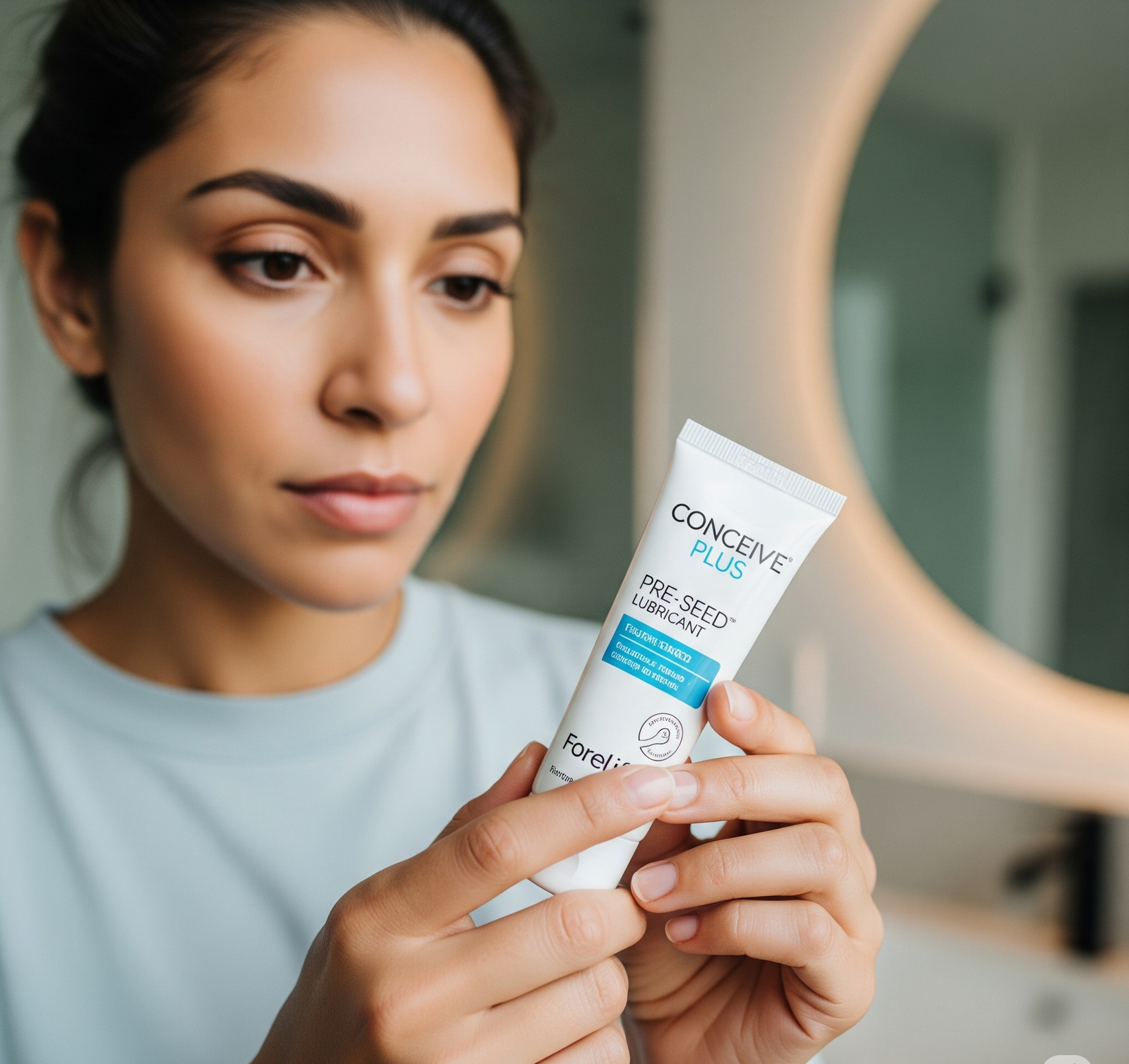Home Insemination Kit: What You Need to Know
A Home Insemination Kit can help you try to conceive in the privacy of your own space. Here’s how it works. With the right tools and clear steps, you can avoid clinic visits and still follow a safe process.
 What Is a Home Insemination Kit?
What Is a Home Insemination Kit?
A Home Insemination Kit includes basic supplies you need to place sperm near your cervix. It usually contains:
A clean, needle‑free syringe
Sterile specimen cups for collection
Fertility‑friendly lubricant
A menstrual cup or disc to hold fluid in place
You gather these items ahead of time so they’re ready when you hit your fertile window.
Why Choose a Home Insemination Kit?

Choosing a Home Insemination Kit gives you:
Privacy: No waiting rooms or scheduled clinic times
Comfort: You work at your own pace in a familiar setting
Cost savings: Supplies often total under $50, versus hundreds at a clinic
Many women find that this option feels less stressful and more in control.
Key Components Explained
Syringes and Cups
Use a 3 mL or 5 mL syringe without a needle.
Sterile cups collect and hold the semen sample.
Fertility‑Friendly Lubricant
Brands like Pre‑Seed help sperm move freely.
Apply a pea‑size amount at the vaginal opening.
Menstrual Cup or Disc
Holds the semen in place for a few hours.
Gently insert after insemination and leave in for at least 15 minutes.
Ovulation and Pregnancy Test Strips
Track your LH surge and confirm if you conceive.
You’ll need ovulation strips for timing and pregnancy strips for results.
How to Use Your Home Insemination Kit
Here’s how it works step by step:
Track your cycle to find your fertile days.
Collect sperm into the sterile cup.
Draw the sample into the syringe, leaving out air bubbles.
Lie back with a pillow under your hips.
Gently insert the syringe tip just inside the vagina.
Slowly push the plunger to release the sample.
Remain still for 15–20 minutes or insert a menstrual cup.
Repeat this process on two days in your fertile window for the best odds.
Tips for Success
Wash hands and clean your workspace before you begin.
Use fresh sperm or follow thawing instructions if frozen.
Stay relaxed—tension can slow sperm movement.
By knowing each item in your Home Insemination Kit and how to use it, you set yourself up for a smooth, stress‑free process. With practice and clear timing, you can take charge of your journey to parenthood without leaving your home.
Components and Kit Options

A good home insemination kit has each item you need. Here’s how it works. Knowing your components helps you choose the right kit and save money.
Syringes and Specimen Cups
Use a 3 mL or 5 mL syringe without a needle.
Check that the tip is smooth and the plunger moves easily.
Sterile specimen cups hold the sperm sample.
Look for cups with secure lids to avoid spills.
Fertility‑Friendly Lubricant
Regular lubricants can harm sperm.
Choose one labeled “fertility‑friendly,” like Pre‑Seed.
Apply a small, pea‑size amount at the vaginal opening.
Some women also put it inside with a clean applicator.
Menstrual Cups or Discs
Cups or discs help keep semen close to the cervix.
Pick soft, flexible silicone that fits you well.
Insert immediately after insemination and leave in 15–20 minutes.
Remove gently and rinse with warm water.
Ovulation & Pregnancy Test Strips
Ovulation strips detect your LH surge before ovulation.
Test at the same time each day for best results.
Once you miss a period, switch to pregnancy strips.
A pack of 10–20 ovulation tests and 5–10 pregnancy tests lasts a month.
Ready‑Made Kits vs. DIY Assembly
Ready‑Made Kits: All items come in one box. You pay a small premium for convenience.
DIY Kits: Buy each item separately. You may save 30–50%.
Compare prices online and check reviews for quality.
Make sure individual items meet the same safety and sterility standards.
Kit Options to Consider
Some kits include a free instruction booklet or video link.
Others add extras like pH strips or warming pads.
Decide which add‑ons help you most—and skip what you don’t need.
Always check expiration dates on test strips and lubricants.
By understanding each part of your home insemination kit, you can pick the best option for your budget and comfort. Whether you buy a ready‑made set or assemble your own, focus on quality, safety, and clear instructions. That way, you’ll be ready when your fertile window arrives.
Research on Home Insemination Kits

Knowing the data behind home insemination kits can boost your confidence. These studies show that, when done right, home methods can match clinic success.
Home vs. Clinic Success Rates
A randomized trial of 53 women compared six cycles of home insemination to six clinic cycles using thawed donor sperm. Pregnancy rates were 13 of 29 at home and 11 of 24 in clinic. A crossover added more proof that home insemination can work just as well as clinic‑based IUI when timing and tools are correct. Read the details: PubMed: Home vs. Clinic Study.
Feasibility and Patient Acceptance
An early BMJ report looked at incorporating home donor insemination into established programs. It found that women felt comfortable and safe doing insemination at home. The method was easy to follow, and most participants preferred the privacy and control it offered. See the full report: PubMed: BMJ Feasibility Report.
Outcomes in Special Cases
A study of couples who had never had intercourse used home intravaginal insemination with donor sperm. Women aged 20–33 saw a 69% pregnancy rate over six cycles, ages 33–36 had 43%, and those over 36 had 25%. This shows home kits help a wide range of women, even in challenging situations. Learn more: PubMed: Special Cases Study.
Key Takeaways from the Studies
Home insemination can match clinic IUI when you follow steps correctly.
Privacy and comfort make home methods a good choice for many women.
Home kits work even in cases of sexual dysfunction or other barriers.
Proper timing, clean tools, and simple tracking lead to the best results.
Using Your Home Insemination Kit Effectively
 When you have a Home Insemination Kit ready, follow clear steps and tips to boost your chances. Here’s how it works.
When you have a Home Insemination Kit ready, follow clear steps and tips to boost your chances. Here’s how it works.
Timing Your Insemination
Use ovulation strips each morning to spot your LH surge.
Plan your first insemination within 12–24 hours after a positive result.
If possible, inseminate again the next day to cover your peak window.
Step‑by‑Step Kit Use
Wash your hands and wipe a clean surface with mild soap.
Collect the semen sample in a sterile cup.
Draw the sample into the syringe, leaving out air bubbles.
Lie back with a pillow under your hips.
Gently insert the syringe tip just inside the vagina.
Push the plunger slowly to release the sample.
Remain reclined for 15–20 minutes or insert your menstrual cup.
Troubleshooting Common Issues
Low sample volume: Ask your donor to use gentle stimulation or a larger cup.
Insertion difficulty: Apply a small amount of fertility lubricant to the syringe tip.
Irregular ovulation signals: Combine test strips with mucus tracking for clear signs.
Safety and Sterilization Tips
Use only single‑use syringes and cups.
Clean your workspace before and after with mild, unscented disinfectant.
Avoid touching the syringe tip or cup rim to keep them sterile.
Storing and Maintaining Your Kit
Store all parts in a dry, cool place away from direct light.
Check expiration dates on test strips and lubricant before each cycle.
Replace items that show wear or damage to ensure safety.
Frequently Asked Questions
What exactly comes in a Home Insemination Kit?
A kit includes a needle‑free syringe, sterile specimen cups, fertility lubricant, test strips, and often a menstrual cup or disc.
How much does a complete kit cost?
Most DIY kits cost $30–$50 for all supplies, versus $300+ for a single clinic visit.
Can I reuse any of the supplies?
No. Single‑use tools ensure sterility. Reusing items raises infection risk and lowers success odds.
Is home insemination safe without a doctor?
Yes, if you follow instructions, use sterile tools, and track ovulation accurately.
When should I seek medical help instead?
See a doctor if you have pain, abnormal bleeding, or if you’ve tried 3+ cycles without success.
How many attempts should I plan for?
Success per cycle is 15–25%. Plan for at least two to three cycles to improve your odds.
Where can I buy a reliable kit?
You can buy kits online from fertility‑supply stores or assemble your own from pharmacy items.
Do I need a prescription for any items?
No prescription is needed for syringes, cups, or most fertility lubricants. Test strips may vary by country.



